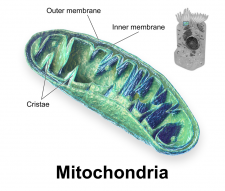"Safe" call? My thoughts on the latest mitochondrial replacement paper
By Ted Morrow,
Ted's Blog
| 06. 14. 2016
This is an important paper because it may well be the last published set of experiments from the Newcastle group (which has been developing mitochondrial replacement therapy) before the HFEA makes a decision on whether or not they are given a licence to implement pronuclear transfer (PNT) clinically. The overall message they convey is one of safety. Problems with carryover are noted and success in terms of improved efficiencies in the development of the techniques are brought to the fore (they now employ an ‘early’ version called ePNT).
From my point of view the most interesting aspect of this study is the question of mitonuclear mismatching, which is something I’ve addressed with colleagues in the past. To recap, we proposed that there is a clear possibility that when moving the nuclear genome from one ova to another, the switch from one cytoplasmic/mitochondrial background to another could be detrimental to the health of the developing embryo (this concern applies to any of the variants currently proposed or developed for mitochondrial replacement therapy). We have outlined the evidence from a range of...
Related Articles
By Abby McCloskey, The Dallas Morning News | 10.10.2025
We Texans like to do things our way — leave some hide on the fence rather than stay corralled, as goes a line in Wallace O. Chariton’s Texas dictionary This Dog’ll Hunt. Lately, I’ve been wondering what this ethos...
Paula Amato & Shoukhrat Mitalipov
[OHSU News/Christine Torres Hicks]
On September 30th, a team of 21 scientists from Oregon Health & Science University (OHSU) published a significant paper in Nature Communications, with a scientifically accurate but, to many, somewhat abstruse headline:
Induction of experimental cell division to generate cells with reduced chromosome ploidy
The lead authors were Shoukhrat Mitalipov, recently described here as “a push-the-envelope biologist,” and his long-term colleague Paula Amato. (Recall that in July the pair had co-published with...
By Julia Black, MIT Technology Review | 10.16.2025
Consider, if you will, the translucent blob in the eye of a microscope: a human blastocyst, the biological specimen that emerges just five days or so after a fateful encounter between egg and sperm. This bundle of cells, about the size of...
By Lizzy Lawrence, Stat News | 10.14.2025




